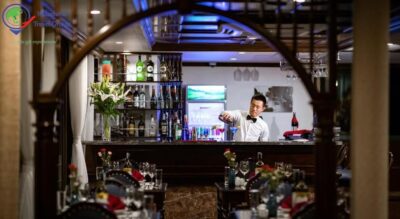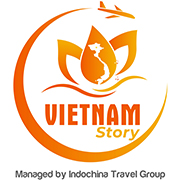Vietnam, a country celebrated by Indian tourists for its breathtaking landscapes, rich cultural heritage, and delectable cuisine, offers a truly unique spectacle: its enchanting floating markets in Vietnam. Primarily nestled within the intricate waterways of the Mekong Delta, south of Ho Chi Minh City, these bustling hubs are far more than mere trading posts. They represent a living tapestry of Vietnamese culture, a captivating window into daily river life, and a vibrant sensory feast promising an unforgettable adventure. For visitors from India, exploring a Vietnamese floating market provides an authentic glimpse into the heart and soul of the region – a world where river trade, time-honored traditions, and the gentle rhythms of the water converge into a truly unique scene orchestrated by friendly local vendors on their boats.
This guide delves into the fascinating world of Vietnam’s floating markets, exploring their unique characteristics, the best times to visit for the most vibrant atmosphere, and offering practical insights for planning your immersive cultural experience as part of your Vietnam tour.
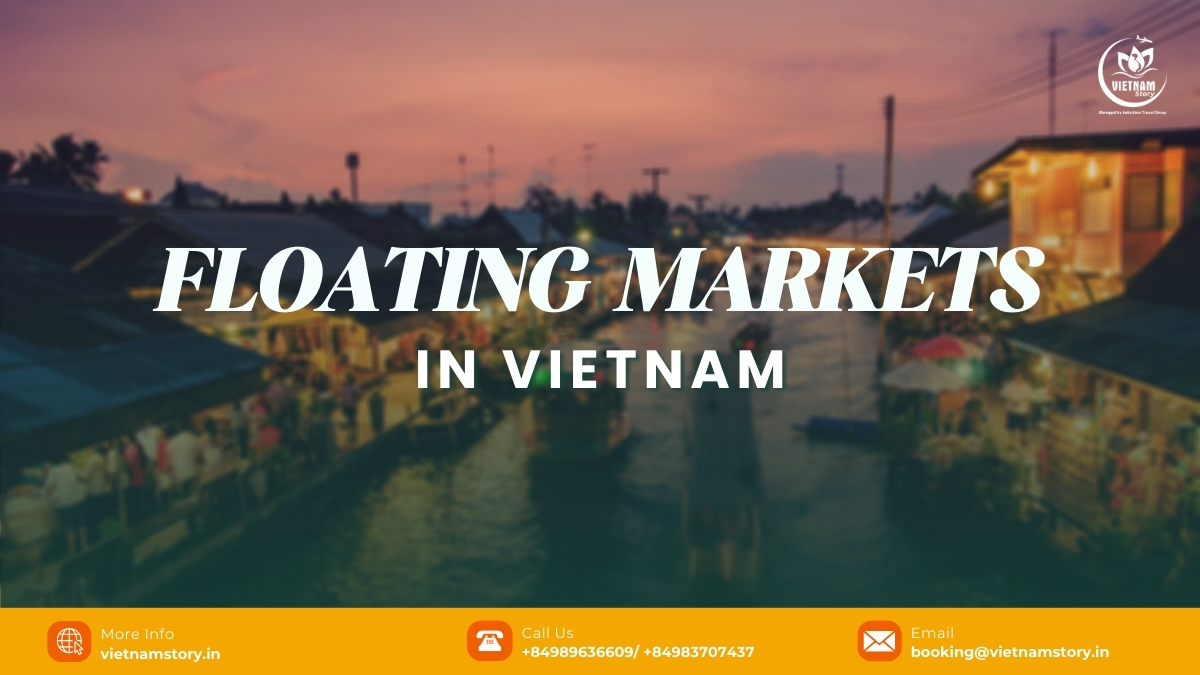
A Waterborne Legacy: The Heartbeat of the Mekong Delta’s Floating Markets
The origins of floating markets in Vietnam are deeply intertwined with the geography and lifestyle of the Mekong Delta. This vast agricultural powerhouse, a complex network of rivers, canals, and streams, has historically relied on its waterways as essential arteries for commerce, transport, and daily life. For centuries (a testament to their historical longevity), local communities have congregated at strategic confluence points – where rivers meet – establishing vibrant marketplaces directly on the water. This unique practice, born from necessity and ingenuity, gave rise to the dynamic floating markets we see today – pulsating centres of economic activity and vivid cultural expression.
These markets are fundamentally water-based, showcasing a way of life intrinsically linked to the river. They embody the resourcefulness and adaptability of the Vietnamese people, where the trading function is carried out directly from boat to boat, often using traditional sampans or larger vessels. More than just places to buy fresh local produce, they hold immense cultural significance, reflecting the community spirit and the daily dance between life and the water, often operating to a traditional farming schedule.
READ MORE: 4 colourful night markets in Vietnam
Top 5 Must-Visit Floating Markets in Vietnam: A Guide for Travellers
While numerous floating markets dot the Mekong Delta, several stand out for their scale, atmosphere, and unique characteristics. Here are five essential experiences to consider for your Vietnam tour package:
1. Cai Rang Floating Market: The Largest and Most Vibrant Hub
Location: Downstream of the Can Tho river, No. 46 Hai Ba Trung street, Ninh Kieu district, Can Tho city.
Arguably the most famous and certainly the largest floating market in the Mekong Delta, Cai Rang is an unmissable spectacle. Just after dawn, typically buzzing between 5:30 AM and 6:30 AM, hundreds of boats converge, creating a kaleidoscope of colour, sound, and activity. Laden with everything from pineapples, watermelons, and dragon fruit (often identified by samples hung on a tall pole) to essential household goods, the market is a major wholesale point but also offers incredible food experiences. Look out for smaller boats acting as floating cafes, serving delicious Vietnamese cuisine like steaming bowls of Pho or Hu Tieu (noodle soups), Banh Mi, fresh spring rolls, and Vietnamese rice paper pancakes (Banh Trang). Its sheer scale and energy make Cai Rang a quintessential floating market experience, easily accessible from Can Tho.
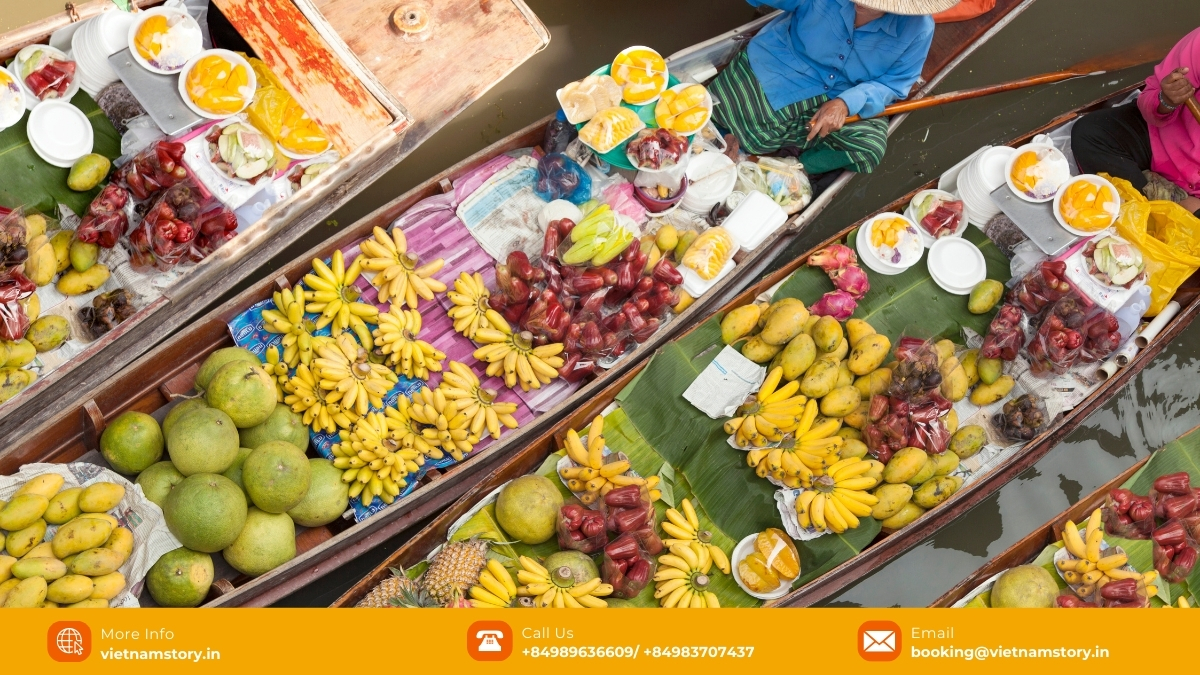
2. Cai Be Floating Market: Accessible Gateway with a Tourist Touch
Location: Tien River, Cai Be District, Tien Giang Province.
Cai Be is notable for its location on the busy Tien River and its relative proximity to Ho Chi Minh City, making it accessible as a day trip. While historically a major wholesale hub, its easy accessibility means it has a more noticeable ‘touristy’ edge compared to others, with a higher proportion of souvenir sellers alongside the fruit and vegetable vendors. However, its longer opening hours (often busy throughout the day) and convenience make it an ideal option for travellers with limited time seeking a taste of the floating market atmosphere. You can still witness active trading of tropical fruits and local crafts.
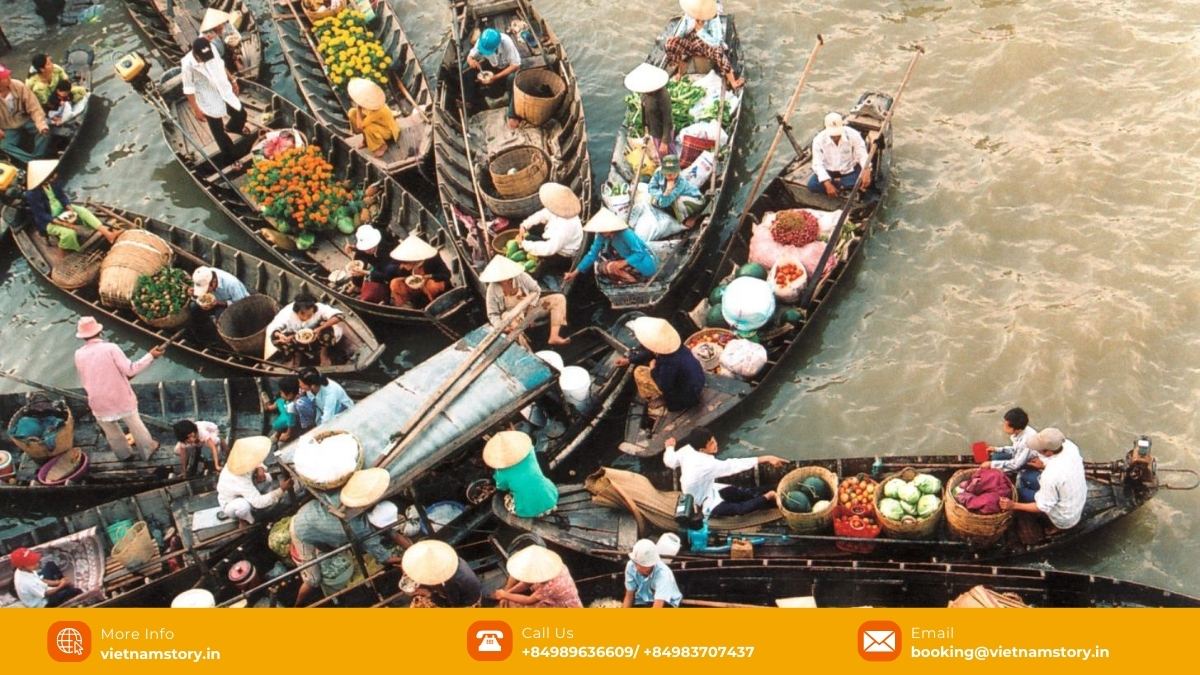
3. Phong Dien Floating Market: An Intimate Glimpse into Local Life
Location: Tay Do Bridge, Nhon Ai, Phong Dien District, Can Tho City (approx. 17km southeast of Can Tho center).
For a more intimate and perhaps more authentic floating market experience near Can Tho, Phong Dien is an excellent choice. With fewer boats (around 40-50 sampans) compared to Cai Rang, it offers a calmer, more relaxed atmosphere. Trading here is primarily retail, focusing on local produce, household goods, and tools. The pace allows for closer observation of interactions between local vendors and residents. It’s particularly charming at sunrise (best visited between 5:30 AM and 6:30 AM) and is known for fair prices for both locals and tourists. Enjoy a coffee or noodle soup from a small boat as you soak in the peaceful morning ambiance.
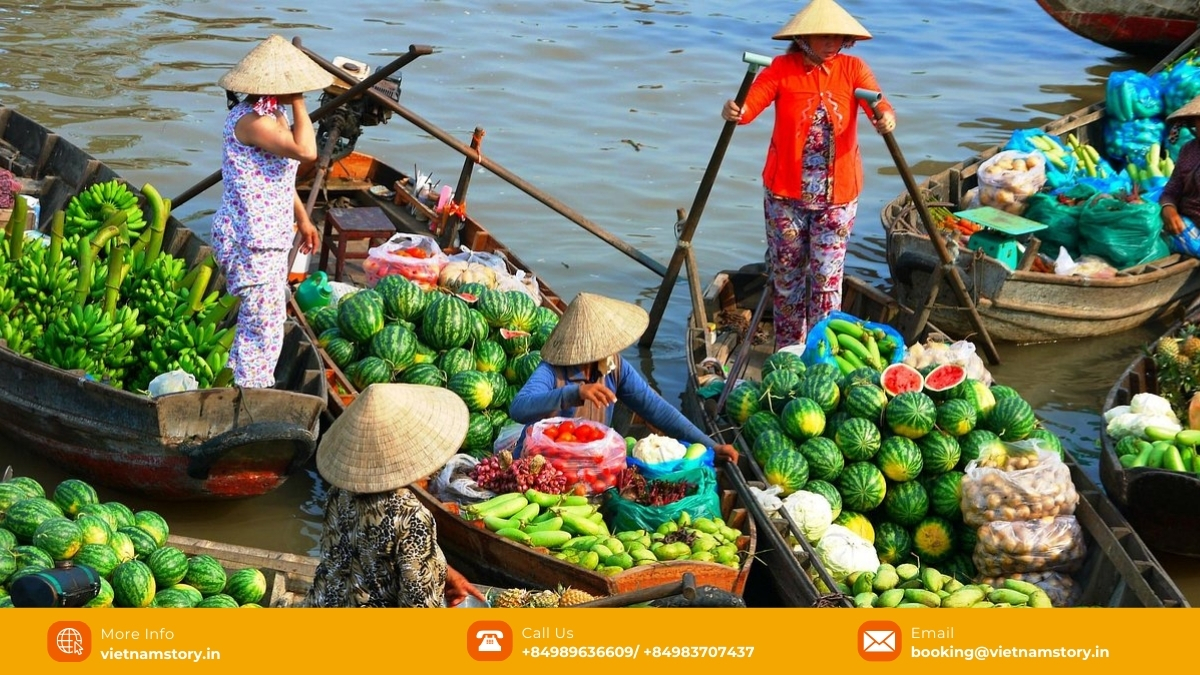
READ MORE: Unlocking the Charm of MEKONG DELTA
4. Long Xuyen Floating Market: Authentic Vibes and Unique Wares
Location: Hau River, Long Xuyen City, An Giang Province.
If you’re seeking a truly authentic floating market largely untouched by mass tourism, Long Xuyen is a strong contender. Located further away from the main tourist hubs, this market caters primarily to locals. Vendors are known for their friendliness, offering fresh produce, colourful vegetables, and delicious local snacks like fish noodle soup. What makes Long Xuyen particularly interesting is the trade in livestock – you might see boats selling tropical birds, tortoises, iguanas, lizards, and even snakes alongside the usual goods! Visiting between 6 AM and 8 AM offers a genuine slice of local life on the Hau River.
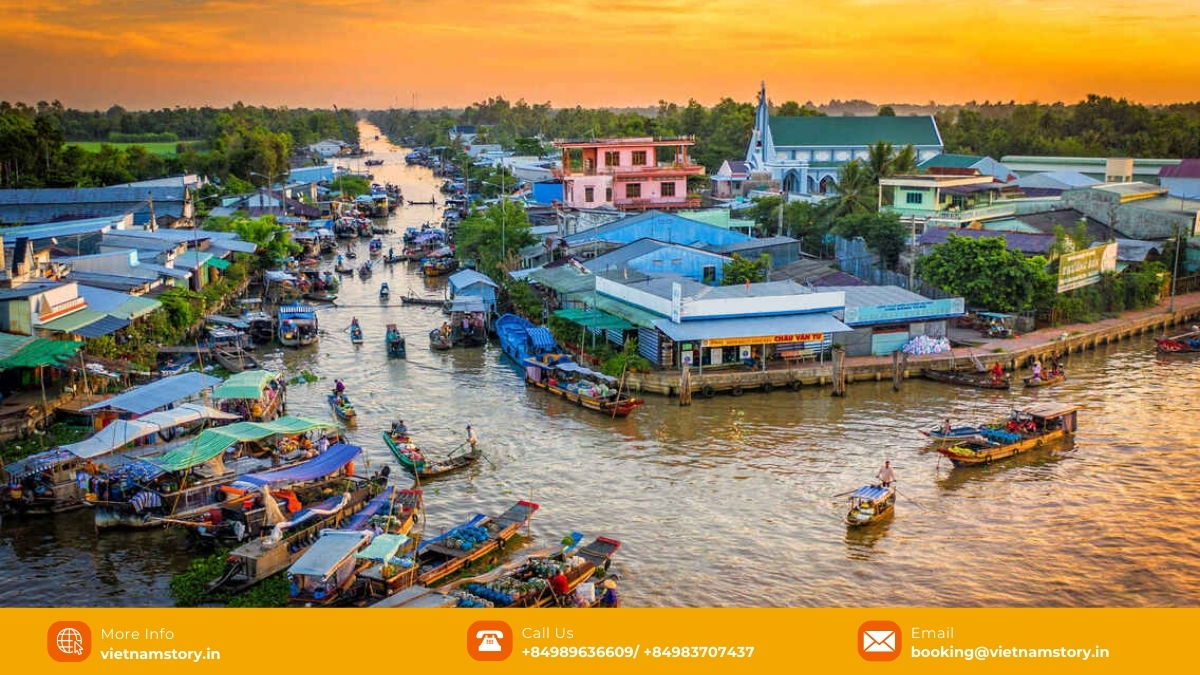
5. Nga Nam Floating Market: Where Five Rivers Converge
Location: Ward 1, Nga Nam Town, Soc Trang Province.
Nga Nam, literally meaning ‘five places’, is situated at the strategic confluence of five different river tributaries. This unique geography creates an incredibly busy and diverse trading point, possibly boasting the widest variety of goods among the markets. Traders converge from all directions, their boats laden not only with colourful fruits and vegetables (like cabbage, garlic, tomatoes) but sometimes also clothing, electronics, and even antiques. The sheer energy and the sight of boats navigating the five-way intersection are impressive. It’s one of the earliest markets, bustling from around 3 AM, peaking early, but remaining active. You might even hear traditional folk songs or spot vendors in the classic ‘Ao Ba Ba’ attire, adding to its rich cultural experience.
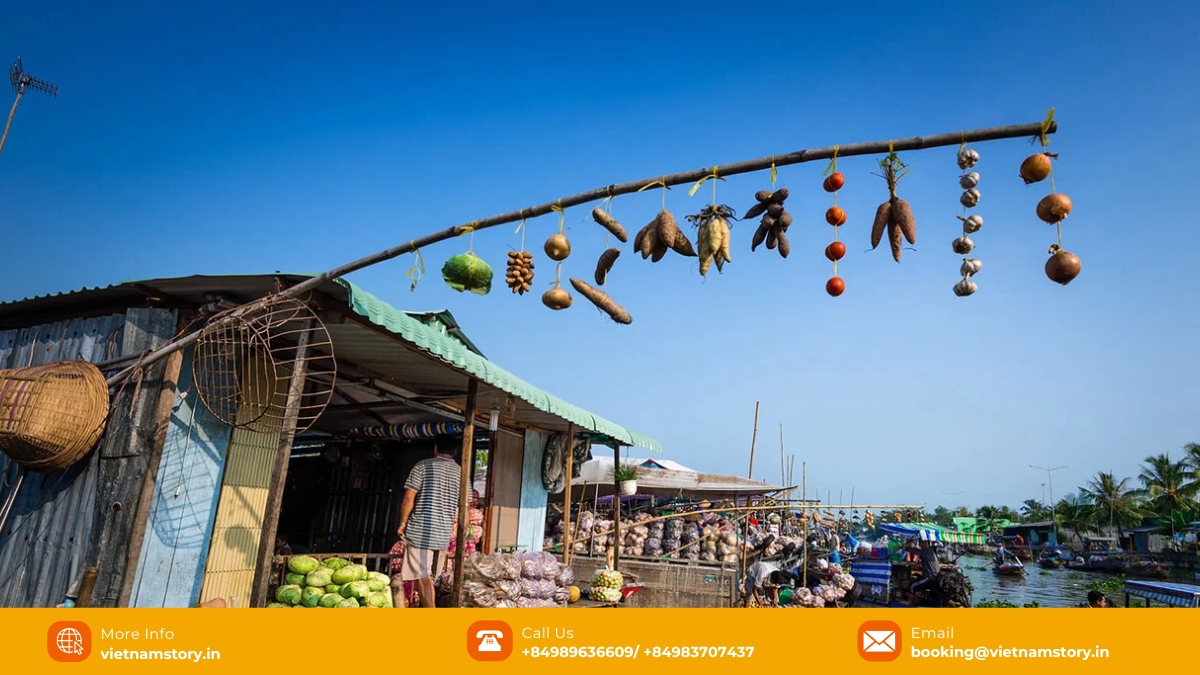
Your Floating Market Adventure: Boat Tours and Cultural Immersion
The quintessential way to explore any floating market in Vietnam is by hiring a boat. Local operators offer various options, from small, traditional wooden sampans perfect for navigating narrower channels and getting up close, to larger, faster motorboats. Many Mekong Delta tours departing from cities like Can Tho, Cai Be, or Vinh Long will include a private or shared boat trip right into the heart of the action.
Your boat journey allows for unparalleled views of the bustling river trade. Glide past boats piled high with colourful produce, observe the skillful navigation of the local vendors, and perhaps even make a purchase directly from another boat. Engaging with the vendors (even with just a smile and a nod) is part of the cultural immersion. Don’t hesitate to try some fresh fruit or a local snack offered from a passing boat – it’s a delicious part of the Mekong Delta experience.
Planning Your Trip to Vietnam’s Floating Markets: Essential Tips for Indian Visitors
To make the most of your visit to these unique attractions, consider these practical tips:
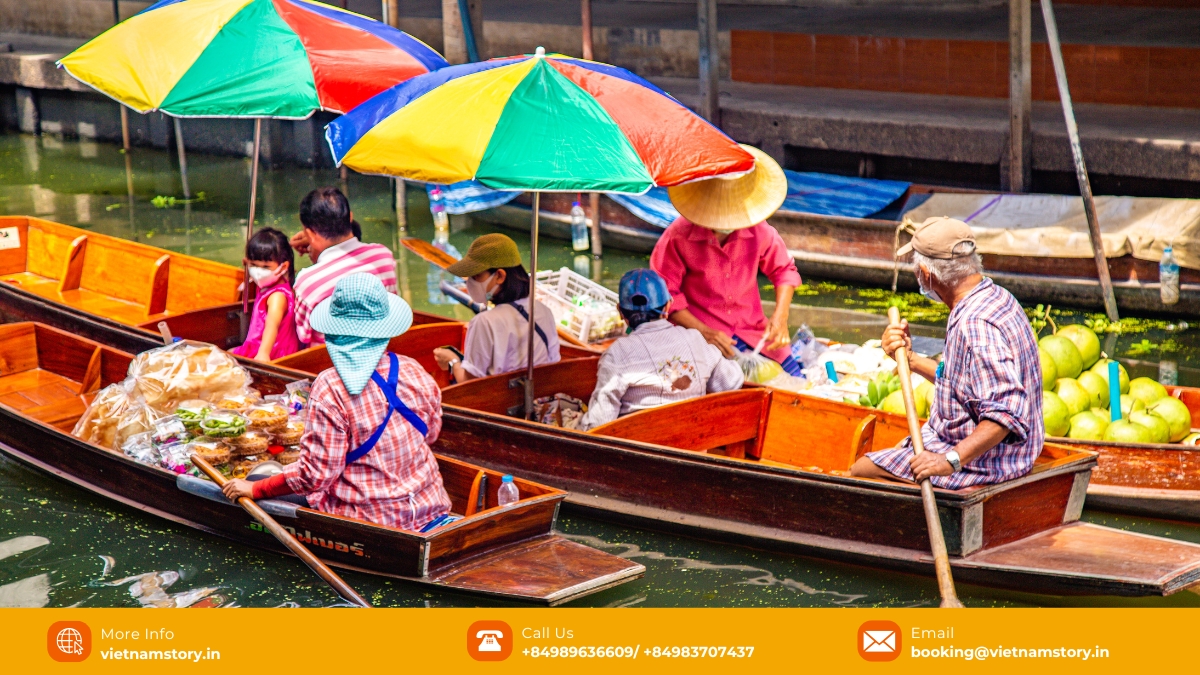
- Best Season: The dry season (roughly December to May) generally offers more pleasant weather with calmer waters and clearer skies, ideal for boat travel. However, the rainy season (June to November) showcases the Delta’s lushness, though be prepared for occasional downpours.
- Go Early: This cannot be stressed enough. The magic happens just after dawn. Aim to arrive well before 8:00 AM (even earlier for markets like Nga Nam or Tra On) to witness the peak activity and most vibrant atmosphere. Markets often wind down significantly by mid-morning.
- Bring Cash: Cash (Vietnamese Dong – VND) is essential. Assume credit cards won’t be accepted. Carry smaller denominations for easier transactions when buying snacks, drinks, or small souvenirs from local vendors.
- Sun Protection: The sun can be intense, especially on the water. Wear a hat, sunglasses, and apply high-SPF sunscreen. Light, breathable clothing is recommended.
- Stay Hydrated: Bring bottled water, although you can also buy drinks from vendors.
- Safety First: Always wear the life vest provided on your boat. Be mindful of other boat traffic, especially in busy markets like Cai Rang.
- Book a Tour: Consider booking a dedicated Mekong Delta tour that includes a floating market visit. This often simplifies logistics like transportation (from Ho Chi Minh City or Can Tho) and boat hire, and provides valuable insights from a local guide.
- Respectful Interaction: Be polite when interacting with vendors and taking photographs. Ask for permission before taking close-up shots of people. Bargaining is sometimes expected, but do so respectfully.
READ MORE: Currency and tippings in Vietnam
Conclusion: An Unforgettable Cultural Tapestry
The floating markets in Vietnam offer far more than a unique shopping experience; they are a vibrant immersion into the enduring spirit and rich Vietnamese culture of the Mekong Delta. They are a testament to a life lived in harmony with the water, a captivating display of commerce, community, and tradition. Witnessing the organised chaos of hundreds of boats laden with colourful goods, tasting delicious Vietnamese cuisine prepared fresh on a sampan, and engaging with the friendly local vendors is an experience that engages all the senses.
For Indian travellers seeking authentic cultural encounters, a visit to a floating market is an absolute must-do. By planning your trip thoughtfully, embracing the early start, and respecting the local way of life, you’ll gain access to the true soul of the Mekong Delta. Ensure your Vietnam tour package includes this unforgettable adventure – the sights, sounds, and flavours will leave you with lasting memories of this extraordinary water world.









